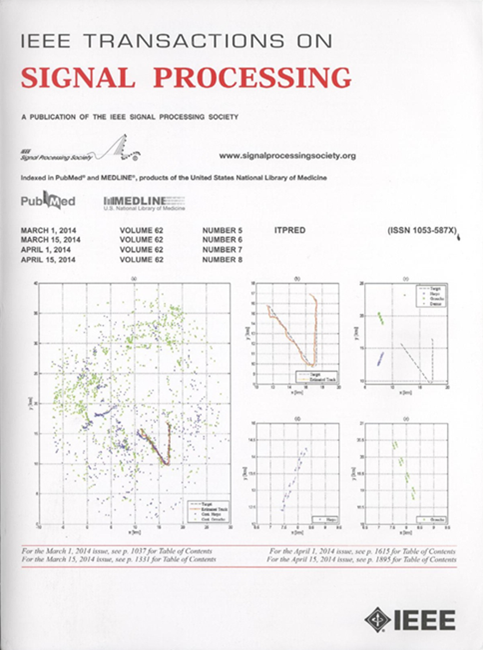具有发射协方差约束的MIMO DFRC系统的最优波束形成
IF 4.6
2区 工程技术
Q1 ENGINEERING, ELECTRICAL & ELECTRONIC
引用次数: 0
摘要
本文章由计算机程序翻译,如有差异,请以英文原文为准。
Optimal Beamforming for MIMO DFRC Systems With Transmit Covariance Constraints
This paper optimizes the beamforming design of a downlink multiple-input multiple-output (MIMO) dual-function radar-communication (DFRC) system to maximize the weighted communication sum-rate under a prescribed transmit covariance constraint for radar performance guarantee. In the single-user case, we show that the transmit covariance constraint implies the existence of inherent orthogonality among the transmit beamforming vectors in use. Then, leveraging Cauchy's interlace theorem, we derive the globally optimal transmit and receive beamforming solution in closed form. In the multi-user case, we exploit the connection between the weighted sum-rate and weighted minimum mean squared error (MMSE) to reformulate the intended problem, and develop a block-coordinate-descent (BCD) algorithm to iteratively compute the transmit beamforming and receive beamforming solutions. Under this approach, we reveal that the optimal receive beamforming is given by the classic MMSE one and the optimal transmit beamforming design amounts to solving an orthogonal Procrustes problem, thereby allowing for closed-form solutions to subproblems in each BCD step and fast convergence of the proposed algorithm to a high-quality (near-optimal) overall beamforming design. Numerical results demonstrate the superiority of our approach to the existing methods, with at least 40% higher sum-rate under a multi-user MIMO setting in the high signal-to-noise regime.
求助全文
通过发布文献求助,成功后即可免费获取论文全文。
去求助
来源期刊

IEEE Transactions on Signal Processing
工程技术-工程:电子与电气
CiteScore
11.20
自引率
9.30%
发文量
310
审稿时长
3.0 months
期刊介绍:
The IEEE Transactions on Signal Processing covers novel theory, algorithms, performance analyses and applications of techniques for the processing, understanding, learning, retrieval, mining, and extraction of information from signals. The term “signal” includes, among others, audio, video, speech, image, communication, geophysical, sonar, radar, medical and musical signals. Examples of topics of interest include, but are not limited to, information processing and the theory and application of filtering, coding, transmitting, estimating, detecting, analyzing, recognizing, synthesizing, recording, and reproducing signals.
 求助内容:
求助内容: 应助结果提醒方式:
应助结果提醒方式:


